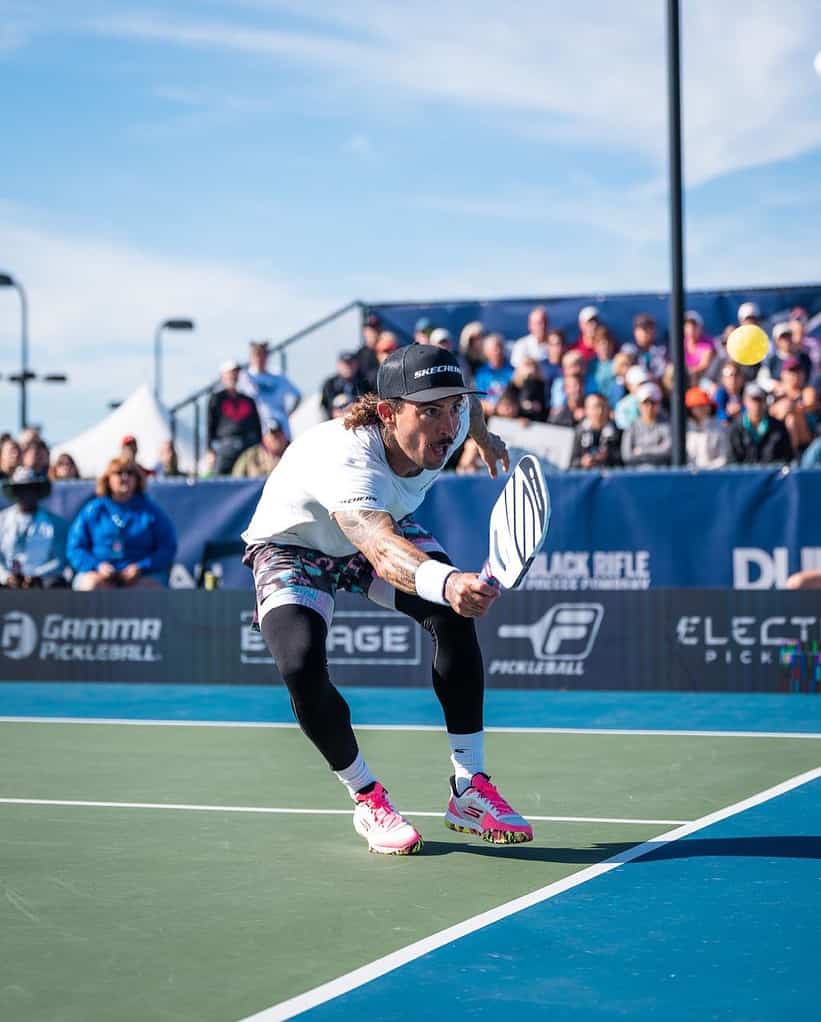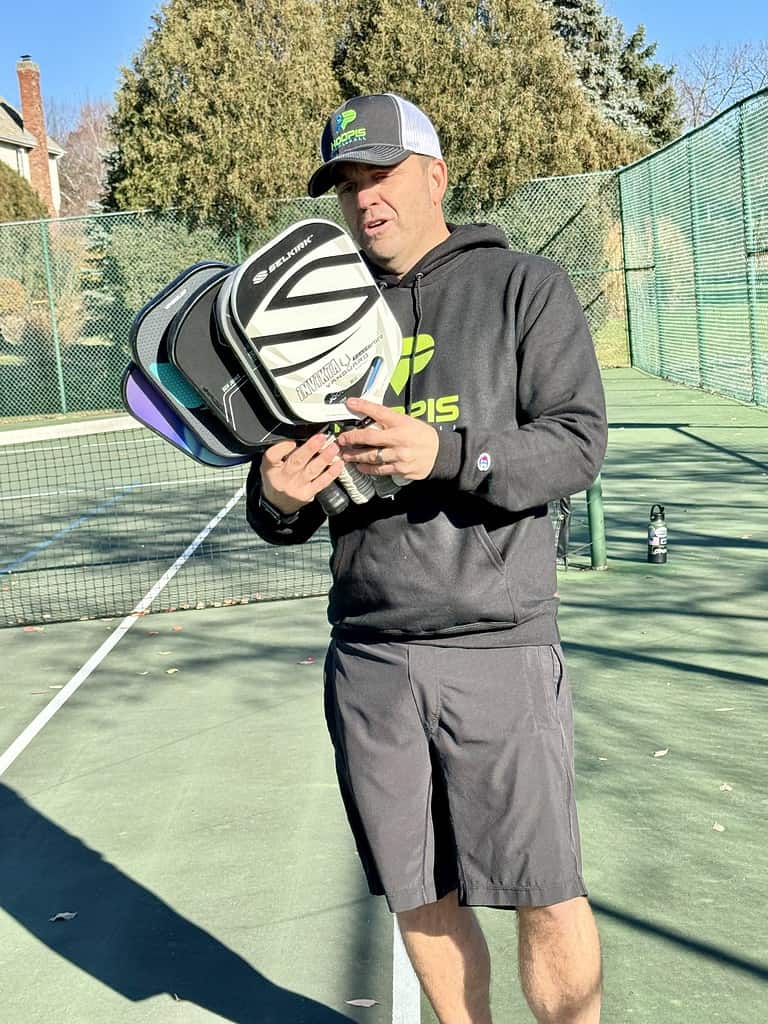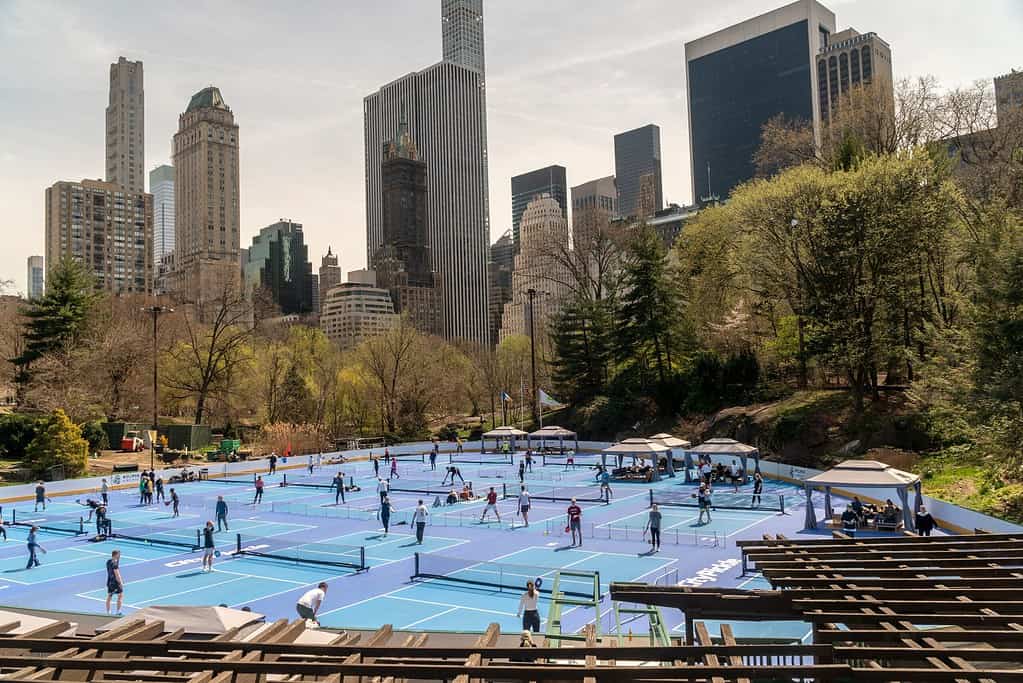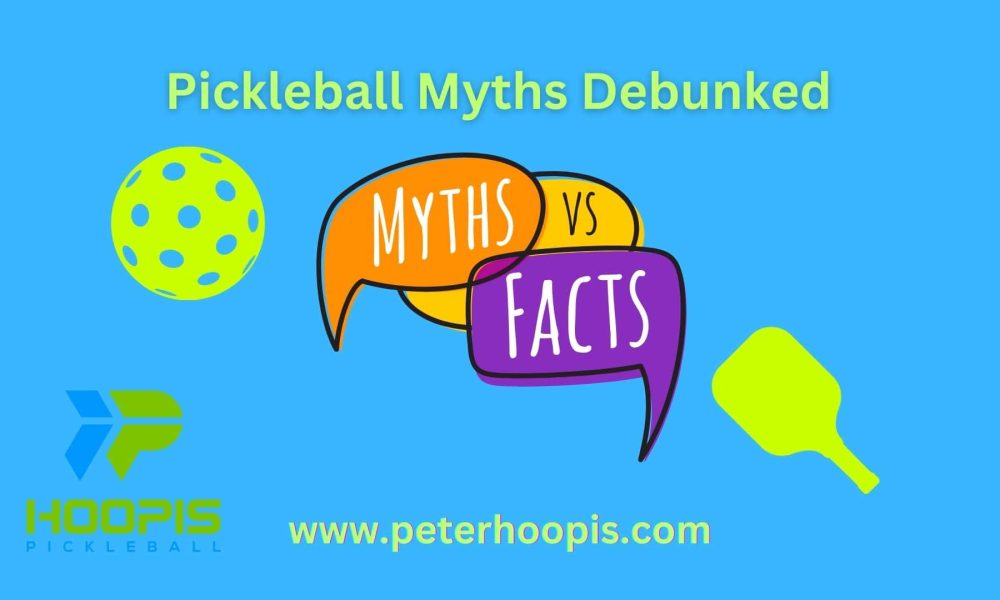If you have been getting involved in the world of pickleball, you might have started to hear a lot of different things as it relates to pickleball.
Its an old persons sport, there is no where to play, it takes no skill an so on.
In this blog post, we’re setting the record straight and debunking these pickleball myths. Armed with facts and insider knowledge, I’m going to go thru the most common pickleball myths that have been bouncing around courts.
I will explore everything from the supposed limitations of the sport to the myths surrounding equipment and play techniques, even where the name came from!
So, are you ready to debunk some pickleball myths and uncover the truths?
Welcome to your ultimate guide to pickleball myths!
What Are The Common Pickleball Myths?
Myth #1: Pickleball is Just a Retirement Sport for Old People

VERY common is the myth that pickleball is predominantly a retirement sport for old people. Most of this probably stems from the game’s early adoption by senior or retirement communities. These communities, particularly in states like Florida and Arizona, were among the first to embrace pickleball for its low-impact nature and social aspects. So often times you would see old people playing pickleball.
Well, the game is certainly played by more than just old retirees, especially with the rise in popularity as of late.
According to the Association of Pickleball Players, the average age of a pickleball player is now 34.8 years old!! This is out of the 48.3 million people who played pickleball at least once in the last 12 months.
More than 70% of avid pickleball players are between the ages of 18 and 44; 40% are between 25 and 34; and 18% are between 18 and 24 according to the study.
Also, the fastest-growing segment being younger players…those between 35 and 44 years old. These figures demonstrate a significant shift in the sport’s demographics, indicating its widespread appeal across various age groups.
The mix of male to female is pretty close with 57% being male and 43% female players.
This changing demographics is further evidenced by the participation rates in national and international pickleball tournaments, where a considerable number of players are in their twenties and thirties and sometimes in their teens!! The world number one female pickleball player, Anna Leigh Waters, is 17 years old at time of writing!
The sport’s growing presence in colleges and youth sports programs also underlines its appeal to younger generations.
The evolution of pickleball from a game played primarily in retirement communities to a sport enjoyed by people of all ages is a testament to its accesability and inclusive nature. As more people discover pickleball, the age range of its players continues to expand, firmly dispelling the myth that it’s just a retirement sport.
Myth #2: Pickleball is Easy and Requires No Skill

I mean, have you watched a professional match before??? It is crazy! The pace of play, speed of the game, rate at which these balls are moving and players reacting is just amazing to watch.
At first glance, pickleball might seem like a slow and simple paddle sport, especially when compared to its faster-paced cousin, tennis. The smaller court size and the slower-moving ball can give an impression of a less challenging game, leading some to underestimate its skill level needed. This perception, however, is far from the truth.
Pickleball also demands good mental skill and not just physical. Players must continuously make split-second decisions, anticipate opponents’ moves, and strategically place their next shot.
Physically, the sport requires excellent hand-eye coordination, quick reflexes, and agility. Players often engage in rapid-fire exchanges at the net. And then out of nowhere the game will slow down into strategic dinking duels.
Unlike tennis, where power often dominates, pickleball rewards control and placement as well. A skilled player can maneuver their opponents around the court, opening up spaces to land winning shots.
Pickleball requires both mental and physical skills. It’s a game of precision, strategy, and endurance. The misconception that pickleball is easy and requires no skill couldn’t be further from the truth.
Myth #3: Pickleball Equipment is Hard to Find

Ok maybe back in the day when pickleball wasn’t nearly as popular it was hard to find equipment. Today, you can find it just about anywhere!
Target, Walmart, Dick’s, your local sporting goods store, and of course, AMAZON.
Everyone wants a piece of the action it seems.
Here are some popular brands known for their quality pickleball equipment:
For beginners looking to choose the right equipment, consider the following tips:
- Paddle Weight: Lighter paddles typically are easier to control, while heavier paddles provide more power. Beginners might find a middle-weight paddle (around 7.3 to 8.4 ounces) a good balance to start with.
- Grip Size: Might not seem important but ensure the grip size matches your hand for comfort and control. A grip that’s too large or too small can affect play big time!
- Material: Paddles come in different materials like wood, composite, graphite and now titanium. Composite or graphite paddles are generally preferred for their lighter weight and better control. I would personally stay away from wooden paddles.
- Price: Price of course is important. You can now find good paddles as cheap as $40-50 and go all the way up to top end paddles costing over $250!
The myth that pickleball gear is hard to find is clearly busted.
Myth #4: There Are Very Few Pickleball Courts

In the early days, pickleball courts were indeed a rarity. However, as the sport has skyrocketed in popularity, so has the availability of courts.
Being able to get court time is the harder issue these days!
In recent years, there has been a significant increase in the number of dedicated pickleball courts across the country. You may have seen some yourself. Many parks, recreation centers, and sports complexes have either added new pickleball courts or converted existing facilities to accommodate pickleball.
For those looking to find nearby pickleball courts, the following resources are invaluable:
- USA Pickleball Association’s Places to Play Directory: www.places2play.org provides a comprehensive list of pickleball venues across the United States, searchable by location.
- Local Community Centers and Sports Clubs: Many community centers and sports clubs have begun to offer pickleball as part of their regular programming, with courts available for use.
- Public Parks and Recreation Departments: Checking with local parks and recreation departments can lead to discovering hidden gem courts in public parks.
Creating your own pickleball court is also an option. Many people set up temporary courts in driveways, or local gyms. All you need is a flat surface, a portable net, and some boundary markers like chalk or tape. This is a nice option if you have some open space.
Players now have more opportunities than ever to enjoy pickleball in their local communities, debunking the myth that courts are few and far between.
Myth #6: Pickleball Was Named After the Founders Dog
Many people believe that the name Pickleball was named after the founders of the game family dog, Pickles. The myth says that Pickles used to love running and chasing the pickleball balls all around the court so they named the game Pickleball.
While its a cute story, it is not true.
Joel Pritchards wife, Joan, came up with the name as a reference to a “pickle boat”. This refers to rowing racing where at the end, a boat is made up a different rowers that are there and then they race. Kind of the left over rowers are pieced together for a race.
This is how pickleball was invented, by “leftover” parts of other various games like table tennis, badminton and whiffle ball. So the reference is to pickle boats because of how they game came together. More on how pickleball got its name here.
Pickleball Myths Conclusion
The sport is truly a great game. Hence, the rising popularity. As more and more people get exposure to the game, more awareness will come. In this blog post, we hope to have helped debunk some of these common pickleball myths.
With these myths put aside, I’m sure more will arise. But we will take those as they come!
There’s never been a better time to join the rapidly expanding world of pickleball. if you are looking for a new way to stay active, a great way to meet people or just want to have some fun, pickleball offers something for everyone.
Consider joining a local club or attending a beginner’s clinic to start your journey in this exciting sport.
It’s important to get out there and have fun!


